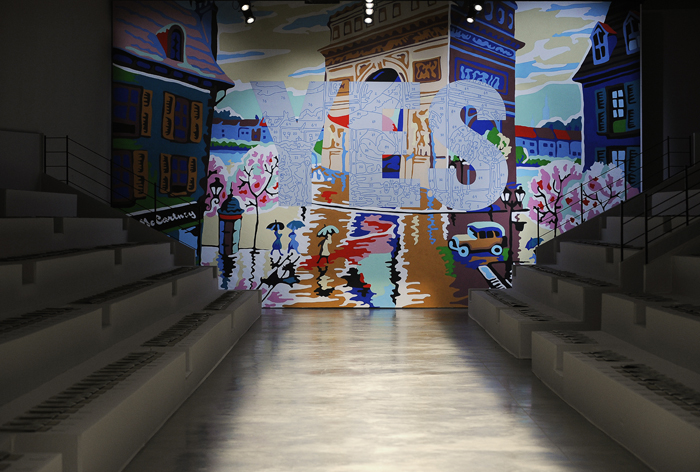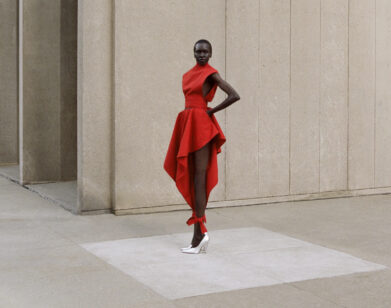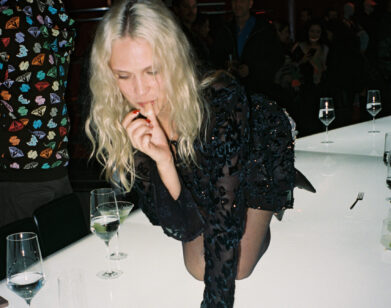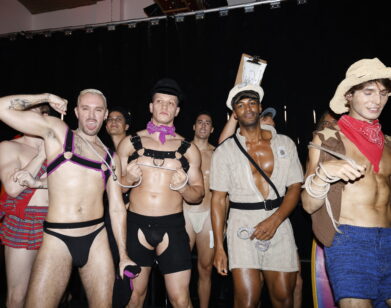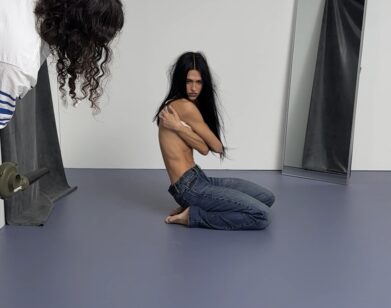Paris Day 6: Bare Minimal
It had to happen. A generation raised on frills, gilt and It bags has finally said, “Enough!” Minimalism is back, and it’s aimed at women who didn’t live through it the first time. So it’s all new, shiny and different.
Nowhere was this more evident than on Monday at Celine, where Phoebe Philo has taken the reigns. Philo made Chloé one of the most coveted labels when she designed for the brand from 2001 to 2006, before leaving to spend time with her family. Now back in Paris and in her womanly 30s, she’s in tune with herself and that translates into design in perfect pitch for Celine’s target customer. With a nude body stocking as a base, Philo showed clean leather skirts, military shirt dresses with crisp epaulettes, laced-front tunics with a vaguely YSL feel, trench styling and wide-legged, high-waisted, self-belted trousers. This was all shown with one slip-on platform sandal—which is all a minimal girl needs, really. (LEFT: CELINE, LOOK 16)
Stella McCartney’s collections also come from personal experience. She’s remains true to her belief in animal rights, and never uses leather for a start. And then there’s her clean, real-girl-in-a-big, big world design. Backed by New York artist Trey Speegle’s oversized, paint by numbers “Yes” mural, McCartney showed a great off-the-shoulder jumpsuit wrapped in front like a bath towel. It turns out she had more than one jumper up her sleeve including a soft, short one in ombré colored tank T-shirt style. This collection was feminine, but never cloying. The season’s ruffled edges appear on one side of a clean-edged jacket; the nude body stocking—a new classic this season—is covered but not smothered with lace. Shorts show with halter tops and elliptical jackets look elegant in shantung.
I went to the showroom to see Yves Saint Laurent and what difference daylight, fresh air and the absence of pushy people can have on your perspective! In his way, Stefano Pilati is also aiming for minimalism, but his variety is raw-edged, full of material juxtapositions and carries a few fascinating vestiges of décor. Pilati uses thick white cotton canvas as base for the entire collection as if the usual color and rich fabric textures have been vacuumed away. To underscore this vanishing point, he adds rich silk trim around the armhole of a sleeveless coat, for example, while leaving the rest of the seams raw-edged. Black leather bunting pleats twist around the front of a sleeveless jacket in black terry cloth and he’s roughly patched fat embroidered strawberries on canvas like a savage memory of picnics past. One tunic trimmed with rough ribbons includes a zip-on white dickey, as if Pilati is deliberately trying to rough up the usual sleek construction. One look at his black leather pinafore and you see what he’s aiming for.
Giambattista Valli was is still all about sequins, feathers and the evocative ruffle, but this collection had a spare, graphic quality that’s new for him. Imagine a strict car coat covered with black and white sequins and a skirt and turns it into a base and so feathers have veered from trim to become a full skirt and ruffles go large and loose to sculpture the shapes of jackets and simple dresses.

